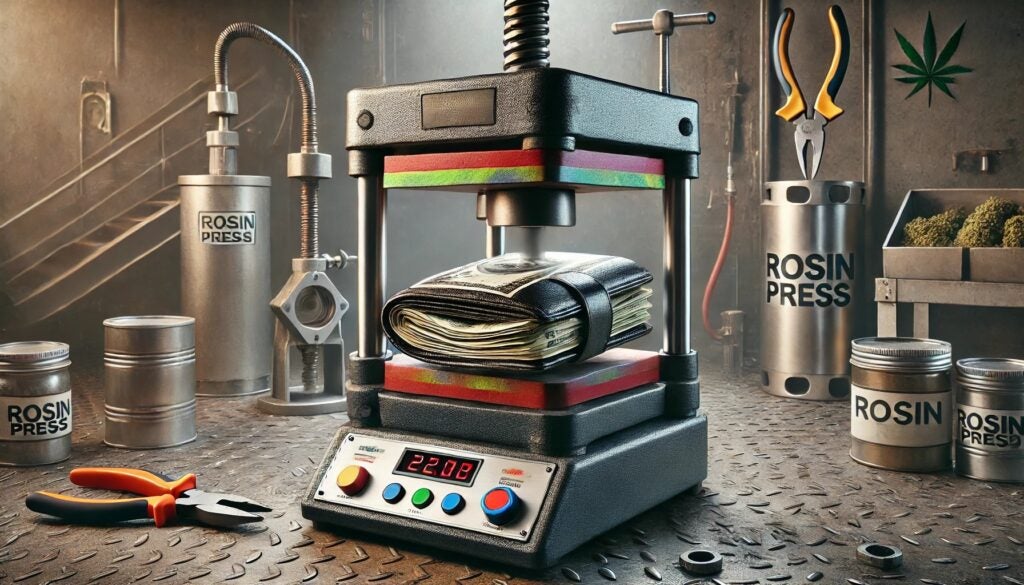As cannabis sales soar in states with legal markets, excise taxes have emerged as a crucial factor shaping the industry.
Unlike tobacco, cannabis remains free from federal excise taxes but faces significant state-level levies. The structure and scope of these taxes vary widely, often influencing market dynamics and consumer behavior.
- Get Benzinga's exclusive analysis and the top news about the cannabis industry and markets daily in your inbox for free. Subscribe to our newsletter here. You can’t afford to miss out if you're serious about the business.
The Rise Of Retail-Level Taxes
In seven of the nine states projected to exceed $1 billion in 2024 cannabis sales—Arizona, California, Maryland, Massachusetts, Michigan, Missouri and Washington—excise taxes are imposed solely at the retail level. These taxes, such as Washington's steep 37% rate and Massachusetts' 10.75%, are directly visible to consumers at checkout, fostering transparency about the cost of legalization.
Retail-level taxation differs from traditional tobacco excise taxes, which often target distributors. By applying taxes at the point of sale, states ensure revenue collection and shape consumer behavior by making the cost of cannabis policies more apparent.
Excise taxes also serve a broader policy purpose: they aim to reduce consumption by increasing prices to account for external costs, such as societal or health impacts. In the case of cannabis, this approach attempts to balance market growth with public health considerations.
Read Also: Beer Industry’s Oldest Trade Organization Wants Hemp And Cannabis Beverages To Pay More Taxes
Dual-Level Taxation: Illinois And Colorado
Two major markets, Illinois and Colorado, impose excise taxes on both cultivators and retailers. For instance, Illinois levies a 7% cultivation tax on initial transfers and up to 25% at retail, depending on THC content. While this structure broadens the tax base, it also introduces complications.
Thomson Reuters highlights that vertically integrated businesses in these states face higher tax burdens due to state-calculated market rates, which may not align with actual costs.
Vertically integrated businesses—those that both grow and sell cannabis—often bear disproportionate tax burdens in these states. This is because state-calculated “average market rates” for internal transfers between cultivation and retail divisions may overestimate actual costs, leading to inflated tax liabilities compared to non-integrated operations.
Preparing For Tax Season
Unlike other sectors, cannabis enterprises navigate unique tax challenges shaped by varying state regulations and the absence of federal excise taxes. This patchwork of state-specific frameworks underscores the importance of tailored compliance strategies for businesses across the industry.
In states such as Arizona, California, Maryland, Massachusetts, Michigan, Missouri and Washington, excise taxes are applied exclusively at the retail level, with rates spanning from 10% to over 35%. Meanwhile, Illinois and Colorado take a dual approach, taxing cannabis at both cultivation and retail stages. This structure can inadvertently create uneven tax burdens, especially for vertically integrated businesses.
It's important for industry participants to recognize that state regulations can differ significantly and are subject to change. This variability requires a nuanced approach to tax planning, and businesses should consult with professionals to ensure compliance tailored to their specific operating jurisdictions.
Read Next: Your CPA Called: Here’s What The IRS Should Know About Cannabis Businesses
Cover image made with AI
This content was partially produced with the help of AI tools and was reviewed and published by Benzinga editors.
Market News and Data brought to you by Benzinga APIs© 2024 Benzinga.com. Benzinga does not provide investment advice. All rights reserved.








